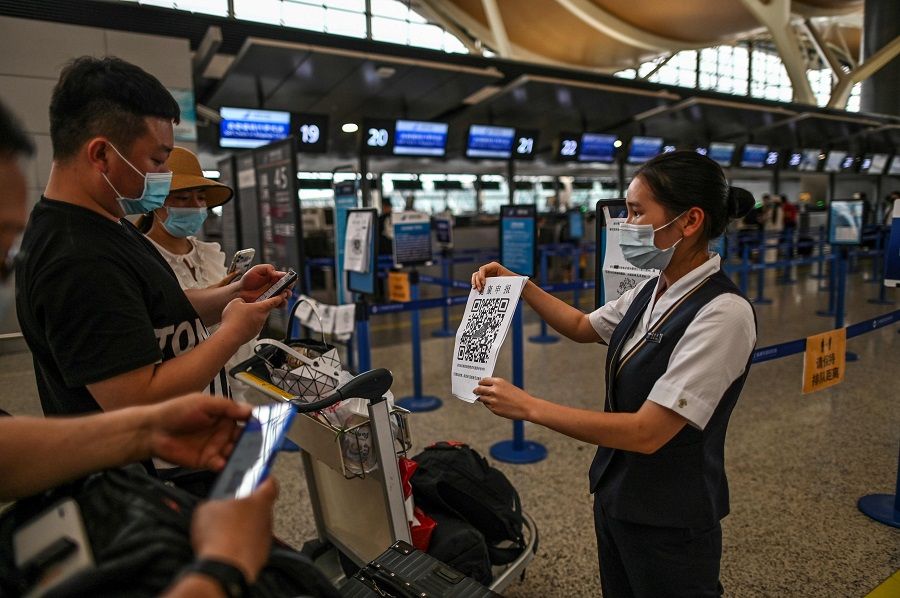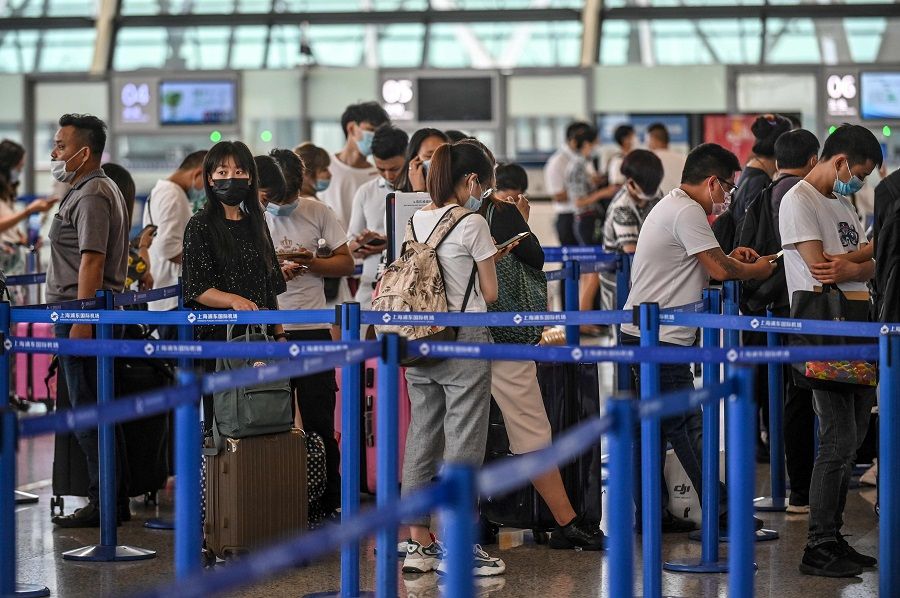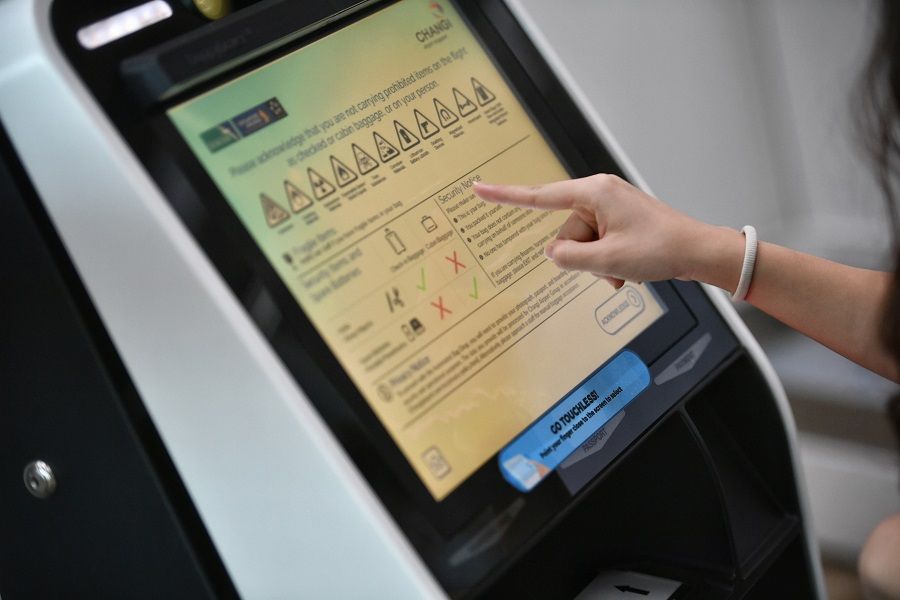What it's like to travel to Shanghai during the pandemic

"When the quarantine is no longer needed, come visit me in Shanghai!"
That was my grand invitation to colleagues and friends before I took up my position as Lianhe Zaobao's Shanghai correspondent. However, I knew I was too ambitious the moment I landed in Shanghai. Not considering the 14-day centralised quarantine, international flights and customs clearance procedures during the pandemic were already enough to turn avid travellers away.
However, due to the multiple layers of protection, some people recorded higher body temperatures while boarding.
The air was tense before I boarded the plane and departed for Shanghai. Singapore Changi Airport's departure hall stood empty. There were no tearful goodbyes. A handful of people walked past hastily, in silence. Stores were shuttered. Of the few that were open, customer greetings had changed from a friendly "Welcome!" to a reminder to "check-in digitally by scanning the QR code".

Knowing that I would be stuck in an enclosed cabin for five hours, I decided to put on a face shield in addition to my medical mask, thinking that two layers of protection would suffice. It was not until I saw how securely protected the other travellers were that I realised the insignificance of my so-called protective measures. More than half of the travellers in the waiting area were in snow white personal protective equipment (PPE) complete with N95 face masks, face shields, and hats. Some people even wore disposable foot covers, determined to thoroughly protect themselves from head to toe.
However, due to the multiple layers of protection, some people recorded higher body temperatures while boarding. They had to remove their hats to lower their body temperatures before joining the queue again. The PPEs also made going to the toilet a cumbersome task, and many passengers chose to not eat or drink throughout the flight. For the first time ever, I was able to use the lavatory without having to queue.
While the number of protection measures have increased, inflight services have been reduced. Inflight meal services are no longer available on the Singapore Airlines' flight to Shanghai, while inflight products are distributed before boarding the aircraft. These include a bag of snacks and drinks, a kit containing a surgical mask, anti-bacterial wipes and a hand sanitiser, and a pair of headphones for the inflight entertainment system.
Three hours into the flight, the air stewardesses emerged again - not with meals and drinks - but with thermometers to measure body temperatures and check if the passengers were feeling alright.
I screamed, "Isn't a blood test enough?" The swabber replied calmly, "After I swabbed both sides of the nose, I would also need to do a throat swab. Then only would the results be accurate."
After more than five hours, the plane landed at Shanghai Pudong International Airport. Passengers seated at the front rows excitedly stood up and reached for their bags, but were immediately stopped by the air stewardesses. A moment later, two Chinese customs quarantine officers entered the cabin. They checked the passenger list and ensured that all of us had completed our online health declarations before the flight. The passengers disembarked in batches, while those who failed to submit their health declarations were the last to leave.

Then came Covid-19 testing. We were given a coronavirus sampling sheet and a test tube after presenting our health codes to the quarantine officers. We then headed to the test site that was ten minutes away from the collection point via a temporarily built passageway. I knew nasal swab tests could easily cause discomfort and was secretly relieved when I heard that we were going to take a blood test. To my horror, I was asked to tilt my head backwards after the blood test. I screamed, "Isn't a blood test enough?" The swabber replied calmly, "After I swabbed both sides of the nose, I would also need to do a throat swab. Then only would the results be accurate."
I completed the series of tests in shock. When I finally regained my composure, I realised that a mere five minutes had passed.
As the Chinese municipality that sees the largest number of daily inbound travellers, Shanghai's accumulated number of imported cases is the highest in China. Yet, so far the municipality has seen no cases of community spread as a result of imported cases.
After a series of twists and turns, we finally arrived at the immigration and customs counter for customs clearance and baggage claim - what we would have done upon arrival in pre-pandemic days. After collecting our luggage, those who had a permanent residence in Shanghai would head to their respective community reception points, while others waited at a designated spot to take the bus to the central facility for quarantine.

The entire process from landing in Shanghai to leaving the airport took me one and a half hours. Yet, it felt much longer due to the numerous declaration and testing procedures. Also, as everything was built temporarily to handle the pandemic, there were no lifts, making it more tiring for passengers with multiple carry-on luggage.
However, it is also because of this airtight procedure and the amount of manpower and resources dedicated to it that made it possible for Shanghai to promptly discover and block imported cases from spreading in the community. As the Chinese municipality that sees the largest number of daily inbound travellers, Shanghai's accumulated number of imported cases is the highest in China. Yet, so far the municipality has seen no cases of community spread as a result of imported cases.
The sudden pandemic has dealt a major blow to the global aviation industry. Various airlines from around the world are severely affected, and future air travelling experiences would be drastically changed. Due to pandemic prevention, budget tickets would become rare in the future while customs clearance would take much longer to complete. Getting on a plane is akin to gearing up for a battle now, sucking all joy out of travelling.

However, the pandemic has also propelled the implementation of new technologies, making it more convenient to travel. Contactless check-in kiosks with proximity touch screens and infrared sensors have been installed in Singapore Changi Airport, making it possible to choose a button by hovering over the screen, reducing the risk of virus transmission. New biometric systems in automated immigration lanes that use facial and iris recognition for identity verification have also replaced the traditional fingerprint scanning process.
Amid the ongoing pandemic, the global aviation industry is facing the common challenge of striking a balance between the safety and the comfort of their international travellers.
Looks like I won't be having any visitors from Singapore for the time being.
